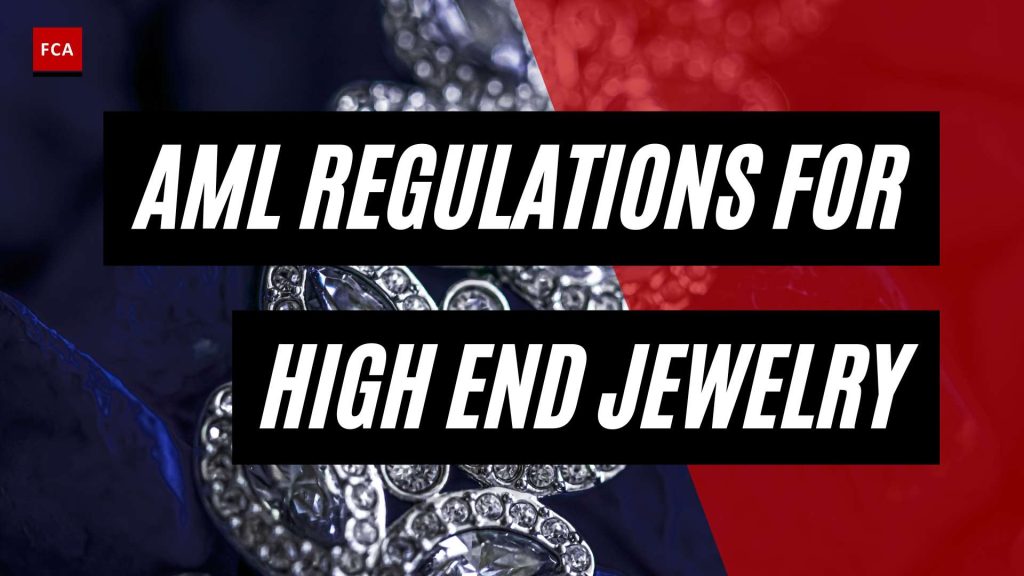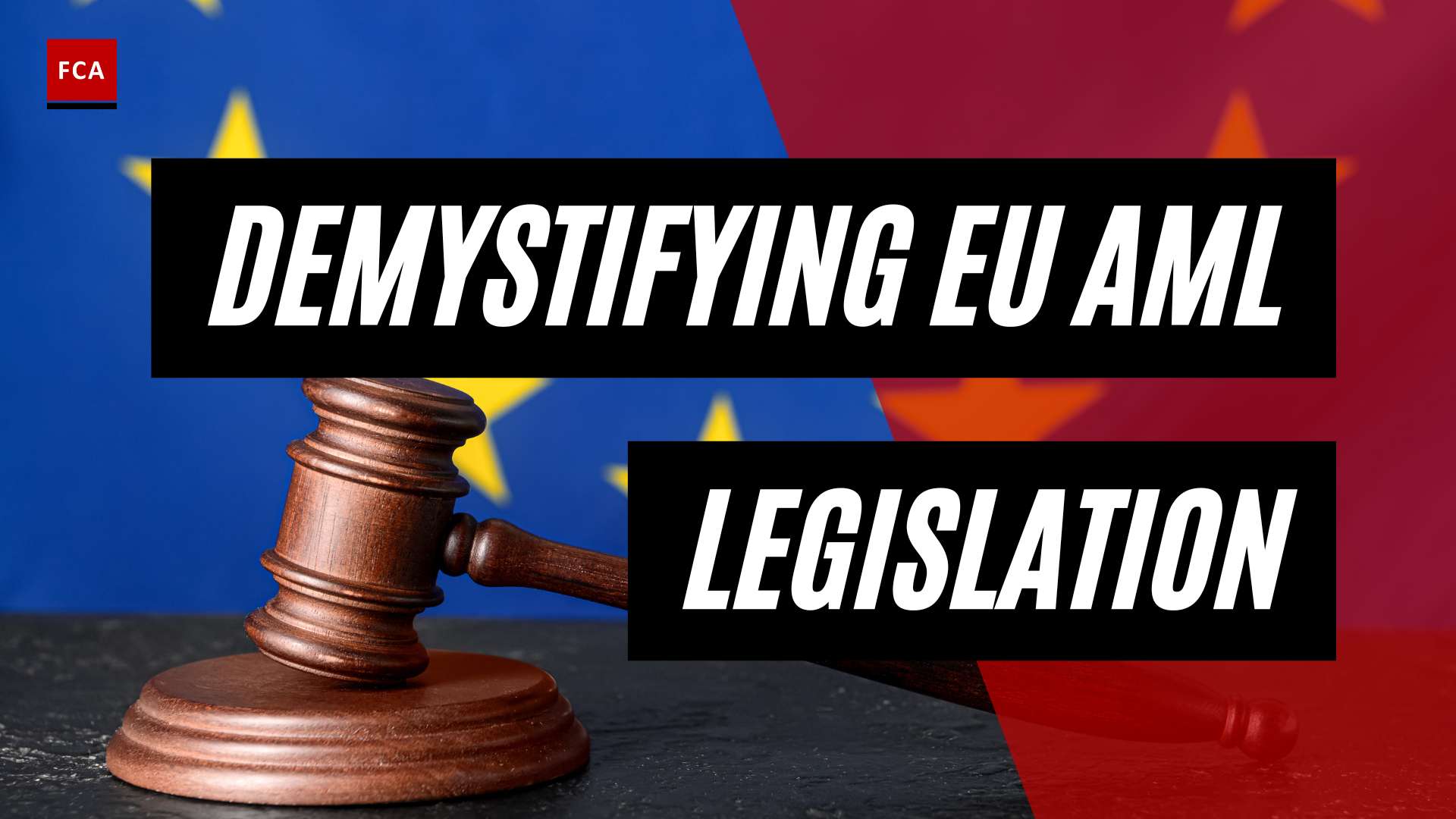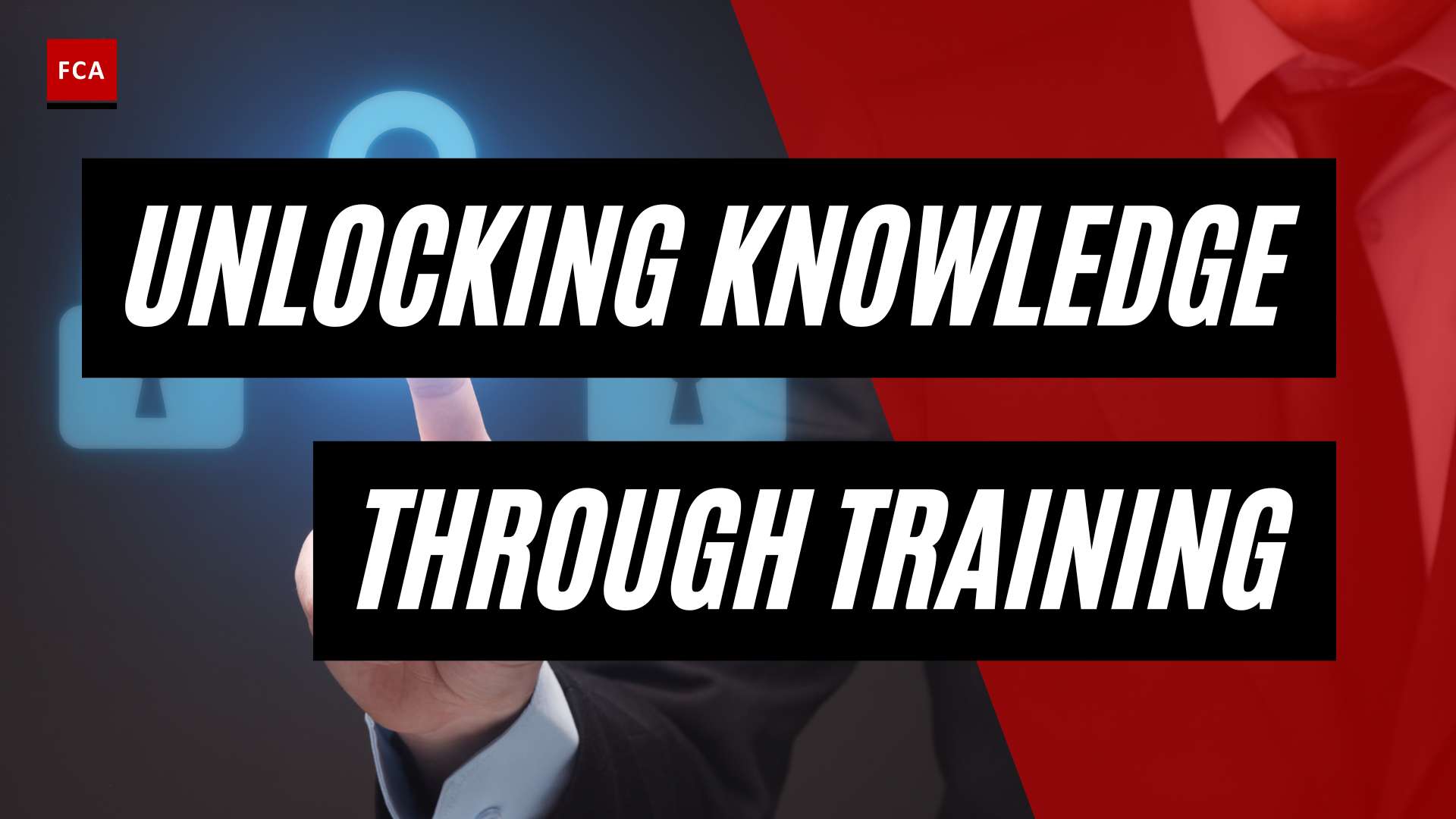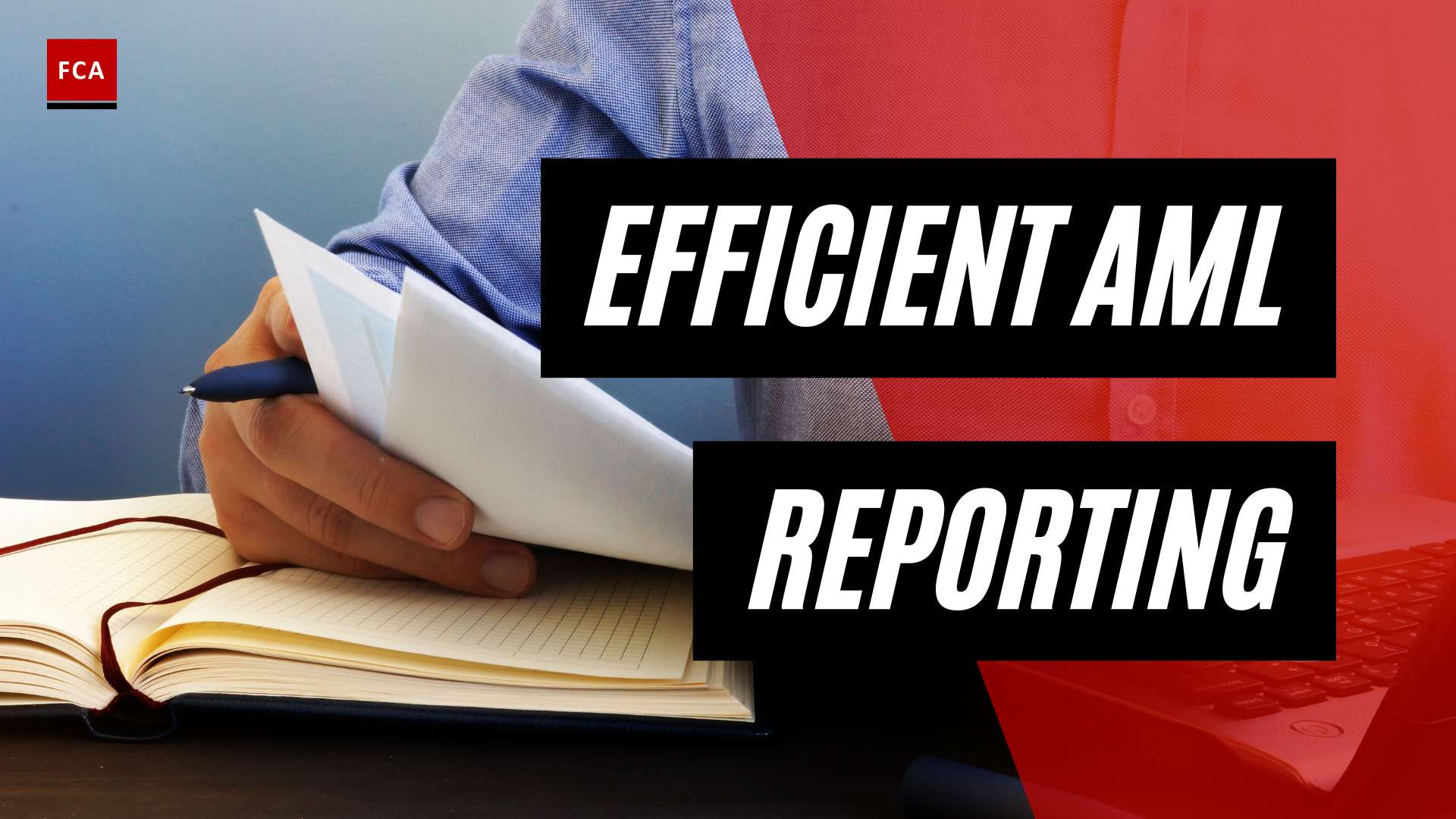Understanding AML Regulations for High-End Jewelry
In the high-end jewelry industry, compliance with Anti-Money Laundering (AML) regulations is of utmost importance. These regulations are in place to combat financial crimes, such as money laundering and terrorist financing, that may occur within the luxury goods market. By understanding and adhering to AML regulations, high-end jewelry businesses can protect their reputation, mitigate risks, and contribute to the overall integrity of the industry.
Introduction to AML Regulations
The Anti-Money Laundering (AML) Act of 2020 mandates that jewelry businesses create a comprehensive AML program to prevent money laundering and terrorist financing activities. This program should include various components, such as risk assessment, the appointment of an AML compliance officer, employee training, independent audits, and customer identification procedures (JVCLegal). By implementing these measures, high-end jewelry businesses can establish robust processes to detect and deter illicit activities.
Importance of AML Compliance in the Luxury Goods Market
Compliance with AML regulations is particularly crucial in the luxury goods market, including the high-end jewelry sector. Precious metals, gemstones, and luxury items hold significant value and can be easily converted into cash or other assets, making them attractive tools for money laundering. Criminals may attempt to exploit the industry’s vulnerabilities by using techniques such as over and under-invoicing, payment through shell companies, and integrating illicit funds through the sale of jewelry products (Sanction Scanner).
Non-compliance with AML regulations can have serious consequences for high-end jewelry businesses. Penalties may include fines and legal consequences, leading to reputational damage and potential loss of business. To avoid such consequences, jewelry businesses must establish and maintain effective AML programs that align with regulatory requirements (JVCLegal).
By adhering to AML regulations, high-end jewelry businesses can contribute to the prevention of financial crimes. These regulations not only help protect the industry from being exploited by money launderers but also contribute to global security efforts. Collaboration between jewelry businesses, regulatory authorities, and financial institutions is essential to staying updated on AML regulations and implementing effective compliance measures (Sanction Scanner).
In the next sections, we will explore the specific AML requirements for high-end jewelry businesses, the consequences of non-compliance, the money laundering risks within the luxury goods sector, and strategies for implementing effective AML measures in the jewelry industry.
AML Requirements for High-End Jewelry Businesses
To ensure compliance with anti-money laundering (AML) regulations, high-end jewelry businesses must establish robust AML programs that include various measures to prevent money laundering and terrorist financing activities. Two essential components of these programs are creating a comprehensive AML program and implementing customer due diligence and transaction monitoring.
Creating a Comprehensive AML Program
High-end jewelry businesses are required to have a written AML compliance program in place, as mandated by the Anti-Money Laundering (AML) Act of 2020. This program should include several key elements, such as risk assessment, employee training, an appointed compliance officer, and independent audits. The goal is to tailor the program to address the specific risks faced by the jewelry business and ensure adherence to AML regulations (JVCLegal).
A comprehensive AML program should include the following components:
-
Risk Assessment: Conducting a thorough risk assessment helps identify the specific money laundering and terrorist financing risks faced by the jewelry business. This assessment allows businesses to prioritize their efforts and allocate resources effectively to mitigate these risks.
-
AML Compliance Officer: Appointing an AML compliance officer is crucial for overseeing the implementation and maintenance of the AML program. This individual should have a deep understanding of AML regulations, keep abreast of industry developments, and ensure the program’s effectiveness.
-
Employee Training: Providing regular AML training to employees is essential to create awareness and ensure compliance throughout the organization. Training sessions should cover topics such as recognizing red flags, understanding customer due diligence requirements, and reporting suspicious activities.
-
Independent Audit: Conducting periodic independent audits helps evaluate the effectiveness of the AML program. These audits should assess compliance with AML regulations, identify any weaknesses or gaps, and recommend improvements to further enhance the program’s efficacy.
Customer Due Diligence and Transaction Monitoring
Customer due diligence (CDD) and transaction monitoring are critical components of AML compliance for high-end jewelry businesses. These measures help identify and mitigate the risk of money laundering and terrorist financing.
-
Customer Due Diligence (CDD): High-end jewelry businesses must implement robust CDD procedures to verify the identity of their customers. This typically involves collecting and verifying customer information, such as name, address, and identification documents. Enhanced due diligence should be conducted for high-risk customers, such as politically exposed persons (PEPs) or customers engaged in high-value transactions.
-
Transaction Monitoring: Implementing transaction monitoring systems allows businesses to detect and report any suspicious activities. By closely monitoring transactions, unusual patterns or transactions that deviate from the norm can be identified, triggering further investigation. Businesses should establish clear protocols for reporting and escalating suspicious transactions to the appropriate authorities.
By creating a comprehensive AML program and implementing robust customer due diligence and transaction monitoring measures, high-end jewelry businesses can fulfill their AML requirements and contribute to the prevention of financial crimes. These efforts not only ensure compliance with AML regulations but also protect businesses from potential penalties and legal consequences while safeguarding the integrity of the industry.
Consequences of Non-Compliance with AML Regulations
Ensuring compliance with Anti-Money Laundering (AML) regulations is of utmost importance for high-end jewelry businesses. Failure to adhere to these regulations can have serious consequences, including penalties, legal consequences, operational implications, and reputational risks.
Penalties and Legal Consequences
Non-compliance with AML regulations can lead to severe penalties imposed by regulatory bodies. These penalties may include hefty fines and the requirement to return funds obtained through illicit activities or transactions. For instance, in the 1MDB scandal, Goldman Sachs was fined $2.9 billion for violating AML and corruption regulations, highlighting the significant financial impact of non-compliance (FlagRight).
Legal consequences can also arise from non-compliance with AML regulations. High-end jewelry businesses may face civil or criminal charges, resulting in further financial penalties and potential imprisonment for individuals involved in facilitating money laundering activities.
Operational Implications and Reputational Risks
Non-compliance with AML regulations can have significant operational implications for high-end jewelry businesses. Regulatory authorities may suspend certain business activities, require costly remediation efforts to improve internal systems and procedures, or even revoke the institution’s license to operate. These operational disruptions can disrupt business continuity and lead to financial losses.
Moreover, non-compliance with AML regulations carries reputational risks. Public perception plays a vital role in the luxury goods market, and any association with money laundering or financial crimes can severely damage a brand’s reputation. Reputational damage can lead to decreased customer trust, lost revenue, strained relationships with other businesses in the industry, and increased scrutiny from regulators.
To mitigate these risks, high-end jewelry businesses must establish and maintain effective AML programs. These programs should include robust internal controls, thorough customer due diligence processes, transaction monitoring mechanisms, and ongoing staff training to ensure compliance with AML regulations. By prioritizing AML compliance, businesses can safeguard their operations, reputation, and financial stability.
In the next section, we will explore the vulnerabilities of luxury assets to money laundering, along with real-life money laundering cases involving luxury goods. Understanding these risks is crucial for implementing effective AML measures in the jewelry industry.
Money Laundering Risks in the Luxury Goods Sector
Money laundering poses significant risks in the luxury goods sector, including high-end jewelry, due to the nature of these assets and their potential for exploitation by criminals. Understanding these vulnerabilities and real-life money laundering cases involving luxury goods is crucial to implementing effective Anti-Money Laundering (AML) measures.
Vulnerabilities of Luxury Assets to Money Laundering
Luxury goods, including high-end jewelry, can be used as a means to “clean” illicit funds and facilitate money laundering activities. Criminals leverage the high value and portability of these assets to transfer money internationally, evade taxes, and avoid detection by law enforcement agencies. The luxury goods market has become an attractive avenue for money laundering due to factors such as:
-
Anonymity: The use of anonymous shell companies and trusts allows criminals to hide their true identities and ownership of luxury assets. This opacity makes it challenging for authorities to trace the origins of funds and identify potential illicit activities.
-
Complex Transactions: High-value art and luxury goods transactions often involve complex networks of intermediaries, making it difficult to track the movement of funds and uncover money laundering schemes. Criminals exploit these complexities to obfuscate the source of funds and legitimize illicit wealth.
-
Global Market: The international nature of the luxury goods market provides opportunities for criminals to move funds across borders and exploit differences in regulations and reporting requirements. This allows them to circumvent scrutiny and avoid detection by law enforcement agencies.
To mitigate these vulnerabilities, countries around the world have enacted laws mandating luxury brands and high-value goods dealers to report suspicious transactions and establish robust AML programs. These measures aim to safeguard the integrity of the luxury goods sector and protect it from being used as a conduit for money laundering activities.
Real-Life Money Laundering Cases Involving Luxury Goods
Several high-profile money laundering cases involving luxury goods have shed light on the extent of the problem and the need for stringent AML compliance in the industry. Some notable cases include:
-
Operation Car Wash (Brazil): Operation Car Wash, one of the largest corruption investigations in history, uncovered a vast money laundering scheme involving Brazil’s political elite. Luxury goods, including high-end jewelry, were used to facilitate the laundering of illicit funds. This case highlighted the vulnerability of the luxury goods market to financial crimes and the importance of robust AML measures.
-
Teodorin Obiang Corruption Case: Teodorin Obiang, the son of Equatorial Guinea’s president, faced a corruption case that revealed his extravagant lifestyle funded by embezzled public funds. The case involved the possession of a $120 million superyacht and eleven expensive cars, showcasing how luxury goods can be exploited for money laundering purposes.
These real-life examples demonstrate the pressing need for the jewelry industry to implement stringent AML measures to prevent money laundering activities. By staying vigilant and adhering to AML regulations, high-end jewelry businesses can contribute to the global efforts to combat financial crimes and safeguard the integrity of the luxury goods sector.
Implementing Effective AML Measures in the Jewelry Industry
To ensure compliance with anti-money laundering (AML) regulations, high-end jewelry businesses must implement effective measures to detect and prevent illicit financial activities. This section explores two key aspects of AML compliance in the jewelry industry: identifying red flags and conducting due diligence in high-end jewelry transactions, as well as leveraging technology to enhance AML compliance in the luxury goods market.
Red Flags and Due Diligence in High-End Jewelry Transactions
High-end jewelry businesses need to be aware of common money laundering techniques used in the industry to implement effective AML measures. Some red flags that may indicate potential money laundering include:
-
Unusual Behavior: Customers who exhibit suspicious behavior, such as making frequent large purchases with cash or exhibiting a lack of concern for pricing.
-
Requests for Anonymity: Customers who request anonymity, refuse to provide identification, or attempt to conceal their identity through the use of third parties.
-
Questionable Sources of Funds: Customers who provide funds from unknown or unverifiable sources, or use multiple currencies in transactions.
-
Unwillingness to Provide Identifying Information: Customers who are reluctant to provide necessary identification documents or complete required forms.
By identifying these red flags, high-end jewelry businesses can conduct thorough due diligence to assess the potential risks associated with customers and transactions. Enhanced due diligence should be employed for high-risk customers and transactions, such as those involving politically exposed persons (PEPs) or customers from high-risk jurisdictions.
Leveraging Technology for AML Compliance in the Luxury Goods Market
In an increasingly digital world, technology plays a crucial role in enhancing AML compliance in the luxury goods market. High-end jewelry businesses can leverage technology, such as artificial intelligence (AI) and machine learning (ML), to strengthen their AML measures. These technologies enable the analysis of vast amounts of data to detect suspicious activities and identify potential risks.
One example of technology-driven AML compliance is the use of facial recognition and document verification solutions offered by companies like Shufti Pro. These solutions help high-end jewelry businesses verify the identity of customers and ensure that they are not engaged in fraudulent or illicit activities.
By integrating AI and ML technologies into their AML compliance processes, high-end jewelry businesses can streamline customer due diligence, transaction monitoring, and suspicious activity reporting. These technological advancements enable businesses to efficiently identify and mitigate AML risks, improving overall compliance efforts in the luxury goods market.
Implementing effective AML measures in the jewelry industry requires a combination of vigilance, due diligence, and the latest technological advancements. By remaining vigilant for red flags and conducting thorough due diligence in high-end jewelry transactions, businesses can reduce the risk of facilitating money laundering activities. Furthermore, by embracing technology and leveraging AI and ML solutions, high-end jewelry businesses can enhance their AML compliance efforts and contribute to a more secure and transparent luxury goods market.
The Role of AML Regulations in Preventing Financial Crimes
As financial crimes continue to pose a threat to global security, the role of Anti-Money Laundering (AML) regulations becomes increasingly crucial. AML regulations are designed to prevent activities such as money laundering, terrorism financing, and other illicit financial transactions. They play a vital role in safeguarding the integrity of the financial system and protecting against criminal activities (FlagRight).
AML Regulations and Global Security
AML regulations are enforced to ensure that financial institutions, including those in the luxury goods sector, adhere to strict compliance measures. These measures include thorough customer identification and verification processes, ongoing monitoring of transactions, record-keeping, and reporting certain types of transactions to regulatory authorities. By implementing these regulations, financial institutions contribute to the detection and prevention of financial crimes (FlagRight).
The luxury goods market, including the high-end jewelry industry, is not exempt from money laundering risks. Precious metals and gems, such as gold and diamonds, are often used as tools for money laundering due to their high value and ease of conversion into cash or other assets. This vulnerability highlights the importance of stringent AML regulations in the industry (Sanction Scanner).
Collaboration and Future Trends in AML Compliance
Collaboration between financial institutions, regulatory bodies, and law enforcement agencies is essential for effective AML compliance. Sharing information, best practices, and intelligence enables a collective approach to combating financial crimes. Increased cooperation and information exchange contribute to a more robust and coordinated response to money laundering and other financial illicit activities (FlagRight).
Future trends in AML compliance are driven by advancements in technology and the need for more sophisticated risk assessment and detection systems. Financial institutions, including luxury goods businesses, are leveraging technology to enhance their AML compliance efforts. This includes the use of artificial intelligence, machine learning, and data analytics to identify suspicious transactions and patterns that may indicate money laundering or other illicit activities (Sanction Scanner).
By staying up to date with emerging trends and adopting innovative solutions, organizations in the luxury goods market can strengthen their AML compliance programs. It is essential to regularly review and update internal policies and procedures to align with evolving AML regulations and mitigate potential risks (Sanction Scanner). Implementing robust AML measures not only protects businesses from legal and reputational risks but also contributes to the global fight against financial crimes.
To effectively address money laundering risks and maintain compliance, luxury goods businesses, including high-end jewelry retailers, can utilize AML solutions such as transaction monitoring software and name screening tools. These technologies enable businesses to segment customers, set specific rules for each segment, automatically prevent high-risk transactions, and screen customers for criminal records and terrorist watchlists. By leveraging such solutions, organizations can enhance their AML compliance efforts and ensure a more secure and transparent operating environment (Sanction Scanner).
As AML regulations continue to evolve and global security remains a priority, the collaboration between stakeholders and the adoption of innovative technologies will play a vital role in preventing financial crimes in the luxury goods industry. By adhering to AML regulations, businesses can contribute to a safer and more secure financial ecosystem while protecting their own interests and reputation.
Implementing Effective AML Measures in the Jewelry Industry
To combat the risks of money laundering in the jewelry industry, it is crucial for businesses to implement effective anti-money laundering (AML) measures. By doing so, they can protect themselves from legal and reputational consequences while contributing to the global fight against financial crimes. In this section, we will explore key strategies for implementing AML measures in the jewelry industry, including red flags and due diligence in high-end jewelry transactions and leveraging technology for AML compliance.
Red Flags and Due Diligence in High-End Jewelry Transactions
Identifying and flagging suspicious activities is an essential part of AML compliance in the jewelry industry. Retailers should be vigilant in recognizing potential red flags that may indicate money laundering attempts. Some common red flags include:
- Unusually large cash transactions: Cash-based transactions involving high-value purchases should be carefully monitored, as cash is often used by money launderers to obscure the origin of funds.
- Frequent purchases by the same individual without a legitimate business need: Multiple transactions by the same customer within a short period, especially if they have no apparent business reason, can be a sign of suspicious activity.
- Inconsistent buyer behavior: Buyers who exhibit unusual behavior, such as providing incomplete or false identification documents, may warrant further scrutiny.
- Unexplained source of funds: If a customer cannot adequately explain the source of their funds for a high-value purchase, it could indicate potential money laundering.
To mitigate these risks, jewelry businesses should conduct thorough due diligence on their customers. Implementing a robust customer identification program, including verifying customer identities and maintaining accurate records, is essential. Additionally, conducting periodic reviews of customer profiles and transaction histories can help identify any sudden changes or unusual patterns of activity.
Leveraging Technology for AML Compliance in the Luxury Goods Market
In the digital age, technology plays a vital role in enhancing AML compliance in the jewelry industry. Retailers should leverage advanced tools and systems to streamline their AML processes and mitigate risks effectively. Some key technological solutions include:
- Transaction monitoring systems: Implementing automated transaction monitoring systems can help detect suspicious patterns and anomalies in customer transactions, enabling timely intervention and investigation.
- Know Your Customer (KYC) solutions: KYC solutions, including identity verification services and database screenings, allow businesses to verify the identities of their customers and screen them against global watchlists and PEP (Politically Exposed Person) databases.
- Data analytics and artificial intelligence: Utilizing data analytics and artificial intelligence technologies can enhance risk assessment capabilities, enabling businesses to identify emerging patterns of money laundering and adapt their AML strategies accordingly.
By leveraging technology, jewelry businesses can enhance their ability to detect and prevent money laundering activities effectively. However, it’s important to remember that technology should be used as a complement to human expertise and judgment, not as a substitute.
As regulatory challenges in the jewelry industry continue to evolve, businesses must stay informed and adapt their AML policies accordingly. By closely monitoring and regulating cash flows, conducting thorough customer identification processes for high-value transactions, and leveraging technology for enhanced AML compliance, jewelry retailers can effectively combat money laundering risks in the industry.
AML regulations play a critical role in preventing financial crimes, ensuring global security, and safeguarding the integrity of the luxury goods market. Collaboration between industry stakeholders, regulatory bodies, and law enforcement is essential to staying ahead of evolving money laundering techniques. By working together and staying vigilant, the jewelry industry can contribute to a more secure and transparent global financial system.








